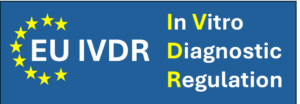IVDR (In Vitro Diagnostic Medical Device Regulation)

The In Vitro Diagnostic Medical Device Regulation (IVDR) 2017/746 is a European regulation that came into effect on **May 26, 2022**. IVDR replaces the In Vitro Diagnostic Medical Device Directive (IVDD) and introduces more rigorous requirements for the safety and performance of in vitro diagnostic devices (IVDs) in the EU.
The regulation aims to improve patient safety by enhancing the traceability of IVDs and setting stricter rules for the conformity assessment and post-market surveillance of these devices.
Importance of Compliance
Compliance with IVDR is essential for manufacturers wishing to market their IVDs within the EU. The new requirements increase the level of scrutiny, especially for high-risk devices, to ensure safety and accuracy.
Non-compliance can result in severe consequences, such as withdrawal of products from the market, fines, or restrictions on marketing and sales.
Key Features of IVDR
– Risk-Based Classification: Unlike IVDD, which had a list-based approach, IVDR introduces a risk-based classification system. Devices are classified into **four classes: A, B, C, and D**, with Class D representing the highest risk.
– Stricter Clinical Evidence Requirements: IVDR requires manufacturers to provide more comprehensive clinical evidence to demonstrate the accuracy and reliability of their devices.
– Performance Evaluation and PMS: Continuous performance evaluation and post-market surveillance (PMS) are required to ensure the ongoing safety and effectiveness of IVDs.
– Notified Bodies: Most IVDs now require Notified Body involvement for conformity assessment, significantly increasing regulatory oversight.
Scope of Application
IVDR covers a wide variety of in vitro diagnostic devices, including reagents, instruments, and software used for the examination of specimens derived from the human body to provide information for diagnostic or therapeutic purposes.
The regulation applies to all IVDs, including those used for self-testing and companion diagnostics.
Steps for Compliance
- Device Classification: Classify your IVD device into one of the four classes (A, B, C, D) based on its risk profile.
- Quality Management System (QMS): Implement a QMS in accordance with ISO 13485.
- Technical Documentation: Prepare the Technical File that includes detailed information about the design, performance evaluation, and intended use of the device.
- Performance Evaluation: Conduct clinical performance studies and provide evidence demonstrating the accuracy, safety, and reliability of the IVD.
- Conformity Assessment: Work with a Notified Body for conformity assessment, particularly for devices in Classes B, C, and D.
- Post-Market Activities: Establish PMS, including a Post-Market Performance Follow-up (PMPF) plan.
- Audits and inspections: Prepare your business on audits and inspections. Identify and correct potential discrepancies before the authorities visit.
Resources and Guidance
– IVDR Full Text: Access the official IVDR document
– Training and Consulting: We offer training programs to assist companies in understanding IVDR requirements and navigating the certification process.
– Guidance Papers: Find guidance documents from the European Commission and Medical Device Coordination Group (MDCG).
Latest Updates and News
Extended Transition Period: To ease the transition to IVDR, certain devices have extended compliance deadlines until May 2025.
Contact Information
For help with IVDR compliance, email us at info@scengineering.dk or use the contact form.